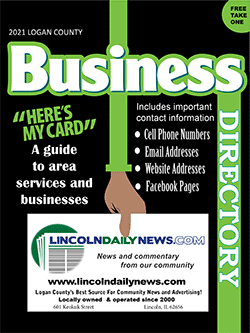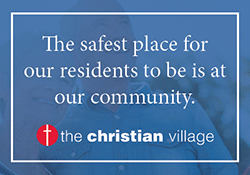|
 The events of that fateful day ignited a
culture of preparedness which is now instilled in the fabric of our
emergency response mechanism. National Preparedness Month is
recognized each September to promote family and community disaster
and emergency planning. Disasters don’t wait, and they can strike at
anytime and anywhere. The Illinois Emergency Management Agency (IEMA),
and local emergency managers, are encouraging Illinoisans to take
time to prepare for potential emergencies at homes, at work, and in
the community. The events of that fateful day ignited a
culture of preparedness which is now instilled in the fabric of our
emergency response mechanism. National Preparedness Month is
recognized each September to promote family and community disaster
and emergency planning. Disasters don’t wait, and they can strike at
anytime and anywhere. The Illinois Emergency Management Agency (IEMA),
and local emergency managers, are encouraging Illinoisans to take
time to prepare for potential emergencies at homes, at work, and in
the community.
“This is the perfect time to prepare yourself and those you love for
unexpected emergencies or disasters,” said IEMA Director Alicia
Tate-Nadeau. “Preparedness is more than building a kit, it’s about
communication, mitigation and education. While being prepared will
not prevent a disaster, it will provide the foundation for an
expedited recovery and instill the confidence to meet challenges
when they arise.”

This year, residents are encouraged to consider COVID-19 guidelines
when evaluating and improving their family emergency plan. Some
things to consider include:
• Make a Plan for When a Disaster Strikes:
Your family may not be together if a disaster
strikes, so it is important to know which types of disasters
(tornadoes, floods, earthquakes, etc.) could affect your area, and
know how you will contact one another or reconnect if separated. How
will your family adjust its routine should a member of your family
require quarantine or isolation due to COVID-19? Plan today for
different scenarios that could impact your work, school or family
routine.
• Build a Kit:
Once a disaster strikes, you will not have time to
shop or search for supplies, so it’s important to have supplies
pre-assembled. A kit should contain basic survival items necessary
during an emergency, such as food, water, weather radio, batteries,
medication, supplies for each member of your family.
 [to top of second
column] |

It is also recommended that you include face masks,
hand sanitizer and disinfecting wipes in your emergency supply kit
to address the current COVID-19 environment. Because a disaster can
strike anywhere, Emergency kits should be kept at home, at work and
in your car.
• Prepare for Disasters:
Limit the impacts that disasters have on you and your
family. Learn how to make your home stronger in the wake of a storm
or other hazards by implementing low-cost home improvement projects.
Review your insurance policies to determine what would be covered in
the event of a flood or storm. Also, practicing tornado drills and
fire drills aren’t just for school. Walking through this procedure
at home with your family, and at work with your co-workers, is a
great way to prepare for a disaster.
• Teach Youth how to Prepare for Disasters:
Disaster planning, response, and recovery efforts should take into
account the unique needs of children, who make up roughly a quarter
of the U.S. population. Get kids involved in building their own
emergency kit. Make sure to include your child's favorite stuffed
animals, board games, books or music in their emergency kit to
comfort them in a disaster. Ready Kids website has a variety of
tools and information that can be incorporated into lesson planning
for educators statewide.

IEMA offers disaster preparedness information on the Ready Illinois
website (www.Ready.Illinois.gov), a one-stop resource for detailed
information about what to do before, during and after disasters.
During large-scale disasters, IEMA uses the Ready Illinois website,
Facebook and Twitter pages to provide critical information about the
incident, including shelter locations, road closures, safety
information, photos and more.
For more information about emergency and disaster preparedness,
visit ready.illinois.gov.
[Illinois Office of Communication and
Information]
[Text from file received] |